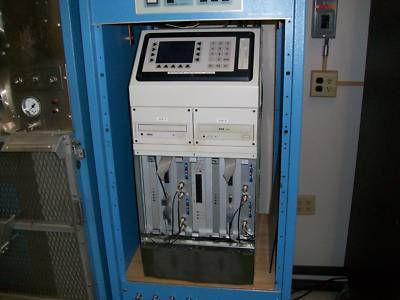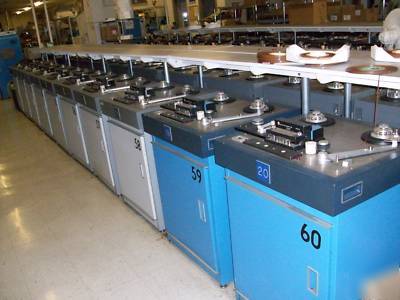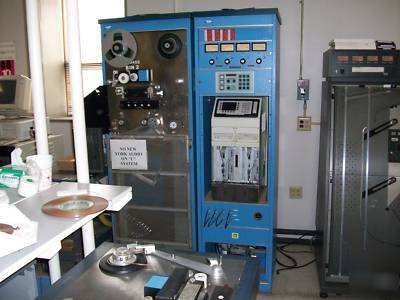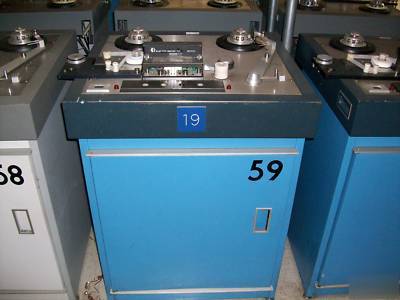Machine Recycling Discussion and Moderated Newsgroup > Full Machines
> Complete Machines
> Welders
> Cassette duplicator digital bin 20 slaves system
Cassette duplicator digital bin 20 slaves system
Electro Sound's Series 8000 Magnetic Cassette Duplicating Systems provides for high speed production of recorded tapes for cassettes. This is made possible by a master tape transport operating at a tape speed of 240 ips (6.1 m/sec) and slave transports which operate at both 120 ips (3.05 m/sec) and 60 ips (1.52 m/sec) or 240 ips and 120 ips.The slaves have the HX PRO option and tape cleaners.
On the slaves, features include a microprocessor-based logic control,automatic stop under certain circumstances, a constant tension system for bothtakeup and holdback, automatically switched equalization and bias networks, al ift top cabinet design, and the fact that all electronic and mechanicaladjustments can be made from the front. A top panel readout indicates the number of completed selections of each pancake and the number of pancakes run,while the packer arm assures a smooth tape pack (the packer arm can beefeater when using reels).
The CONCEPT NANO DAAD system was developed to eliminate the problems associated with the analog loop bin. Such problems include:
poor channel to channel separation
long term equalization stability due to head/tape contact
Concept Design chose to improve this portion of the duplicating process since it was felt that the majority of a duplicator's problems originated from this aspect.The DAAD system eliminates these problems by keeping all signals in th digital domain until those signals reach the slave record bus, where the digital data is then converted to analog through very high speed precision. Digital to Analog converters.
The DAAD digital loop bin digitized signals from any source which is in AES/EBU, SDIF-2, or high speed 8 bit parallel compatible format. When loading from AES/EBU. or SDIF-2 (also known as real time), the DAAD system utilizes two play-back devices: on for side A and one for side B information. When loading at high speed, a single 8 bit parallel playback device is normally used, due to cost considerations; however, the DAAD system is not limited to a single high speed load device. After the information is received by the DAAD, it then store that information in a two part memory system. One section of memory has its own control circuitry and stores the side A information. The other section also contains its own control circuitry, and stores the side B information. We call this type of memory a bifurcated (two-part) system, and it lends itself to several advantages.







